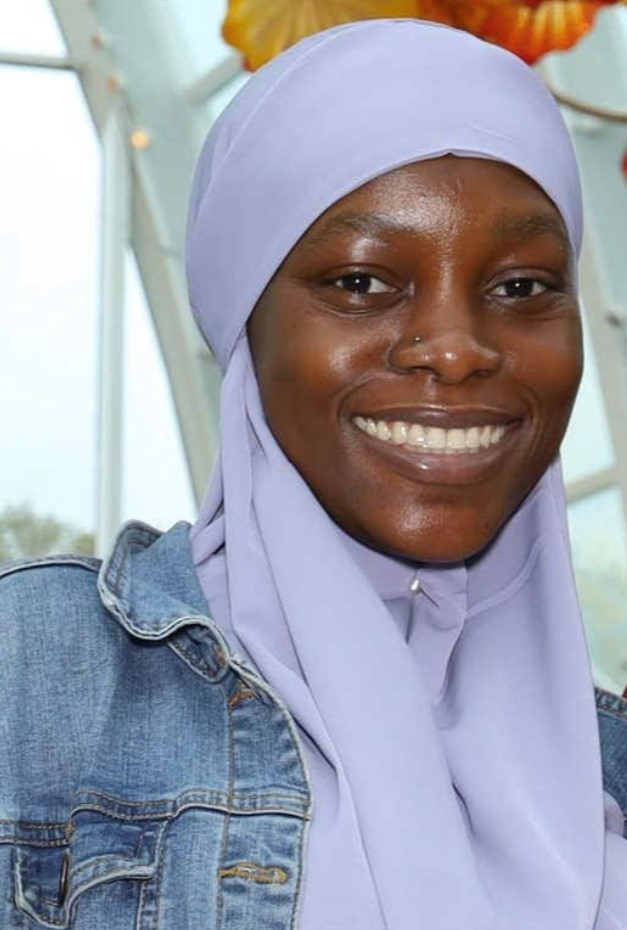Tissue Engineering
(M-512) Towards Functional Artificial Liver Tissues: Improving SLATE Printer Resolution for Higher Fidelity Microvascular Printing in Tissue Engineering.
Friday, October 13, 2023
9:30 AM - 10:30 AM PDT
Location: Exhibit Hall - Row M - Poster # 512

Arafat Fasuyi, B.Sc. (she/her/hers)
Research Assistant
University of Washington, Seattle
Seattle, Washington, United States
Kelly Stevens
Associate Professor
University of Washington, United States
Presenting Author(s)
Last Author(s)
Introduction:: The liver, which is the largest essential internal organ in the body, performs many direct and indirect functions critical to human survival. Unfortunately, diagnoses like cirrhosis and non-alcoholic fatty liver disease can impair these functions, and their incidence continues to rise in the world population. Despite treatments including lifestyle changes, medications, surgery, or transplantation, between 60% to 90% of individuals with liver diseases die within 5 years of diagnosis (1). To address this challenge, our group is working to create engineered liver tissues that can ultimately serve as a bridge or alternative functional liver. To create such tissues, our lab has developed a stereolithography apparatus for tissue engineering (SLATE) that can create soft hydrogel structures with varying complexities and ultimately become 3D-printed artificial liver tissues when seeded with hepatocytes. Despite these advances with the SLATE printer, artificial liver tissue still falls far short of the structural and functional complexity of human liver. In the liver, each hepatocyte lies within two cell distances from the nearest sinusoidal capillary. These capillaries are connected within a network of arteriole and venules, which are approximately 50 µm in diameter and form the borders and central axes of liver lobules, the functional units of the liver (2). Currently, our SLATE printer cannot create vascular channels with diameters less than 300 µm. Hence, this project aims to generate SLATE hardware and bioinks that can achieve higher resolution printing of microvasculature, enabling us to produce more functional artificial liver tissues.
Materials and Methods:: The hydrogel architecture is computationally designed using computer aided design (CAD) software like SolidWorks and then converted into a format interpretable by the Rambo board connected to the SLATE printer. The photosensitive bioink used to create soft hydrogel structures is composed of PBS, 20 wt.% 6-kDa PEGDA, 17 mM LAP as a photo-initiator, and 2.255 mM tartrazine as a photo-absorber. This composition changes depending on the presence or absence of cells, the photomask layer height thickness, and the complexity of the channel architecture in the intended hydrogel. With a projector as the light source, bioink placed on a 100mm PDMS (6:1) dish is cured at 50 µm photomask layer height and 15 seconds exposure time per layer height to create projected pattern. The printed hydrogel is rinsed with PBS immediately after printing and further immersed in PBS for at least 24 hours before functionality testing. The functionality of the hydrogel architecture is tested by running colored-dye through the channel, testing for perfusion.
Results, Conclusions, and Discussions:: The concentration of tartrazine can be varied to control the depth of light penetration during stereolithography printing, thereby confining polymerization to the photomask layer height of our SLATE printer. With this discovery, Grigoryan et al. published work showing that our SLATE printer can create multivascular hydrogels using polymerizable bioinks within minutes. These hydrogels were designed with 1-mm cylindrical channels and fabricated as entangled vascular architectures within the hydrogels. Currently, we have observed fully perfuseable channels up to 800 µm cylindrical channels. In a separate work from our group, bioprinted hydrogels containing hepatocyte aggregates demonstrated better integration with host tissue and blood compared to hydrogels containing single cells (3). Hydrogels were further engineered to contain vascular compartments that can be seeded with endothelial cells known to enhance tissue engraftment through physical remodeling. In nude mice with chronic liver injury, these hepatic aggregates adhered to the hydrogel carriers and remained functional as observed by their albumin promoter activity and positive staining for cytokeratin-18 post engraftment with host tissue. In summary, these hydrogels can help support the survival of functional hepatocyte aggregates by permitting flow through embedded channels.
Manipulating the XY resolution, determined by the projector’s pixel resolution, the Z resolution, determined by the bioink properties like photo-absorbers, and the print settings like light intensity and layer height can improve SLATE printer resolution. These discoveries will enable us to engineer artificial liver tissues that were previously not feasible in the field of tissue engineering and regenerative medicine. In the future, we will continue to enhance the resolution of 3D printed tissue to achieve vessel diameters on the order of venules/arterioles. We will create functional artificial liver tissues by integrating hepatocyte organoids differentiated from induced pluripotent stem cells (iPSCs) into printed gels. Finally, we plan to evaluate the functionality of these artificial liver tissues in vivo in liver-injured mice.
Acknowledgements (Optional): :
References (Optional): :
Materials and Methods:: The hydrogel architecture is computationally designed using computer aided design (CAD) software like SolidWorks and then converted into a format interpretable by the Rambo board connected to the SLATE printer. The photosensitive bioink used to create soft hydrogel structures is composed of PBS, 20 wt.% 6-kDa PEGDA, 17 mM LAP as a photo-initiator, and 2.255 mM tartrazine as a photo-absorber. This composition changes depending on the presence or absence of cells, the photomask layer height thickness, and the complexity of the channel architecture in the intended hydrogel. With a projector as the light source, bioink placed on a 100mm PDMS (6:1) dish is cured at 50 µm photomask layer height and 15 seconds exposure time per layer height to create projected pattern. The printed hydrogel is rinsed with PBS immediately after printing and further immersed in PBS for at least 24 hours before functionality testing. The functionality of the hydrogel architecture is tested by running colored-dye through the channel, testing for perfusion.
Results, Conclusions, and Discussions:: The concentration of tartrazine can be varied to control the depth of light penetration during stereolithography printing, thereby confining polymerization to the photomask layer height of our SLATE printer. With this discovery, Grigoryan et al. published work showing that our SLATE printer can create multivascular hydrogels using polymerizable bioinks within minutes. These hydrogels were designed with 1-mm cylindrical channels and fabricated as entangled vascular architectures within the hydrogels. Currently, we have observed fully perfuseable channels up to 800 µm cylindrical channels. In a separate work from our group, bioprinted hydrogels containing hepatocyte aggregates demonstrated better integration with host tissue and blood compared to hydrogels containing single cells (3). Hydrogels were further engineered to contain vascular compartments that can be seeded with endothelial cells known to enhance tissue engraftment through physical remodeling. In nude mice with chronic liver injury, these hepatic aggregates adhered to the hydrogel carriers and remained functional as observed by their albumin promoter activity and positive staining for cytokeratin-18 post engraftment with host tissue. In summary, these hydrogels can help support the survival of functional hepatocyte aggregates by permitting flow through embedded channels.
Manipulating the XY resolution, determined by the projector’s pixel resolution, the Z resolution, determined by the bioink properties like photo-absorbers, and the print settings like light intensity and layer height can improve SLATE printer resolution. These discoveries will enable us to engineer artificial liver tissues that were previously not feasible in the field of tissue engineering and regenerative medicine. In the future, we will continue to enhance the resolution of 3D printed tissue to achieve vessel diameters on the order of venules/arterioles. We will create functional artificial liver tissues by integrating hepatocyte organoids differentiated from induced pluripotent stem cells (iPSCs) into printed gels. Finally, we plan to evaluate the functionality of these artificial liver tissues in vivo in liver-injured mice.
Acknowledgements (Optional): :
References (Optional): :
